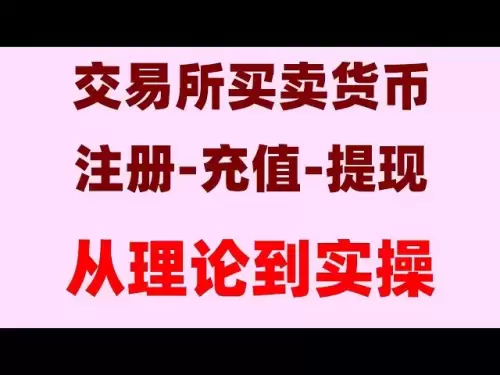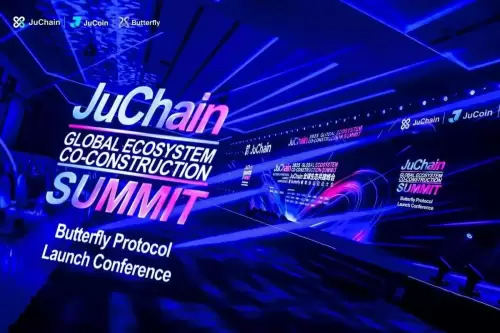 |
|
 |
|
 |
|
 |
|
 |
|
 |
|
 |
|
 |
|
 |
|
 |
|
 |
|
 |
|
 |
|
 |
|
 |
|
隨著區塊鏈技術的發展,可擴展性和可編程性仍然是主要的挑戰,尤其是對於採用UTXO模型的區塊鏈而言。

As blockchain technology develops, scalability and programmability remain key challenges, especially for blockchains that adopt the UTXO model. Kaspa, being a layer-one public blockchain with a BlockDAG structure, manages to achieve high throughput but lacks native smart contract functionality, a limitation also faced by other UTXO systems such as Bitcoin. To address this problem, the Kaspa ecosystem developed Kasplex L2, a second-layer solution that integrates smart contracts compatible with the Ethereum Virtual Machine (EVM) based on the Rollup architecture.
隨著區塊鏈技術的發展,可擴展性和可編程性仍然是主要的挑戰,尤其是對於採用UTXO模型的區塊鏈而言。卡巴(Kaspa)是一個具有阻滯結構的一層公共區塊鏈,設法達到了高吞吐量,但缺乏本機智能合同功能,其他UTXO系統(例如比特幣)也面臨著限制。為了解決這個問題,KASPA生態系統開發了Kasplex L2,這是一種第二層解決方案,該解決方案將基於匯總體系結構的Ethereum Virtual Machine(EVM)集成了智能合約。
In this article, we will conduct a technical analysis of Kasplex L2 from the perspective of a security and research institution. Our goal is to provide a tangible assessment of its design, technical implementation, and its implications for UTXO blockchains. We will explore how Kasplex L2 works, compare it to Bitcoin Inscriptions (such as BRC-20), and discuss its strengths and limitations. This analysis is intended to contribute to a broader discussion of scalability solutions for the UTXO model blockchain.
在本文中,我們將從安全和研究機構的角度對Kasplex L2進行技術分析。我們的目標是對其設計,技術實施及其對UTXO區塊鏈的影響提供切實的評估。我們將探討Kasplex L2的工作原理,將其與比特幣銘文(例如BRC-20)進行比較,並討論其優勢和局限性。該分析旨在為UTXO模型區塊鏈的可伸縮性解決方案進行更廣泛的討論。
Understanding Kaspa's primary chain: a high-throughput UTXO blockchain
了解Kaspa的主要鏈:高通量UTXO區塊鏈
Kaspa is a first-level blockchain with a BlockDAG structure that allows multiple blocks to be generated in parallel. The design is driven by the GHOSTDAG protocol, which enables Kaspa to achieve a high throughput of 10 BPS. Unlike account-based blockchains such as Ethereum, Kaspa uses the UTXO model, where transactions are verified by consuming unspent outputs and creating new outputs, thus ensuring an efficient verification process.
KASPA是具有塊狀結構的第一級區塊鏈,可以並行生成多個塊。該設計是由Ghostdag協議驅動的,該協議使Kaspa能夠達到10 bps的高吞吐量。與以太坊這樣的基於帳戶的區塊鏈不同,Kaspa使用UTXO模型,在該模型中,通過消耗未經許可的輸出並創建新輸出來驗證交易,從而確保有效的驗證過程。
While this architecture performs well in payment scenarios, it presents difficulties in terms of programmability. The UTXO model is inherently stateless and lacks the ability to maintain persistent state or perform complex computations — critical features required for smart contracts. As a result, Kaspa's functionality is limited to simple transfers, which has motivated the development of second-layer solutions to expand its capabilities.
儘管此體系結構在付款方案中表現良好,但在可編程性方面卻帶來了困難。 UTXO模型本質上是無國籍的,並且缺乏保持持久狀態或執行複雜計算的能力 - 智能合約所需的關鍵功能。結果,Kaspa的功能僅限於簡單的轉移,這促使開發了第二層解決方案以擴大其功能。
Kasplex L2: Rollup-based blockchain for smart contract execution
Kasplex L2:智能合同執行的基於匯總的區塊鏈
The Kaspa ecosystem is exploring three Layer 2 (L2) solutions: Sparkle, Igra L2, and Kasplex L2. Among them, Sparkle is still in the theoretical stage, and Igra L2 is still in the development stage. Our analysis will focus on Kasplex L2 because it is the closest to mature implementation so far.
Kaspa生態系統正在探索三層2(L2)解決方案:Sparkle,Igra L2和Kasplex L2。其中,Sparkle仍處於理論階段,IGRA L2仍處於開發階段。我們的分析將重點放在Kasplex L2上,因為它是迄今為止最接近成熟的實施。
Among the three L2 solutions being explored by the Kaspa ecosystem—Sparkle, Igra L2, and Kasplex L2—Sparkle is still in the theoretical stage, Igra L2 is still in the development stage, and Kasplex L2 is the closest to mature implementation, so this article will focus on analyzing it in detail.
在Kaspa生態系統探索的三種L2解決方案中,Spparkle,Igra L2和Kasplex L2 - Spparkle仍處於理論階段,IGRA L2仍處於開發階段,Kasplex L2是最適合成熟的實施的關閉,因此本文將重點詳細分析其詳細分析。
Kasplex L2 is a Rollup-based second-layer scaling solution that relies on the first-level chain for transaction ordering and data availability, shifting the computational load to the second layer. In this design, Kaspa's first-level chain is responsible for determining the standard order of transactions and ensuring that its data is publicly available, while Kasplex L2 performs the task of executing EVM bytecode to realize smart contract functions.
Kasplex L2是一種基於匯總的第二層縮放解決方案,它依靠第一級鏈來用於交易順序和數據可用性,將計算負載轉移到第二層。在此設計中,Kaspa的第一級鏈負責確定交易的標準順序並確保其數據公開可用,而Kasplex L2執行執行EVM字節碼來實現智能合同功能的任務。
Technical design and workflow
技術設計和工作流程
The core mechanism of Kasplex L2 is to embed EVM bytecode in the payload of Kaspa primary chain transactions. The process can be divided into the following steps:
Kasplex L2的核心機制是將EVM字節嵌入Kaspa主要鏈交易的有效載荷中。該過程可以分為以下步驟:
1. Transaction submission: A user submits a transaction to the Kaspa primary chain, and the payload of this transaction contains EVM bytecode. For example, this payload may encode a call to the HelloWorld() smart contract function.
1。事務提交:用戶將事務提交給Kaspa主要鏈,此交易的有效載荷包含EVM字節碼。例如,此有效載荷可以編碼呼叫到Helloworld()智能合約功能。
2. First-level chain orders transactions: Kaspa's BlockDAG orders these transactions within its DAG structure, providing a deterministic transaction sequence.
2。第一級鏈訂單交易:Kaspa的BlockDag在其DAG結構內訂購了這些交易,提供了確定性的交易序列。
3. Layer 2 performs efficient execution: Kasplex L2 runs as an indexer, scanning the payload transactions on the primary chain, extracting the EVM bytecode, executing it in the specified order, and updating its state. Invalid or conflicting transactions (such as transactions attempting to double-spend) will be discarded.
3.第2層執行有效的執行:Kasplex L2作為索引器運行,掃描主鏈上的有效載荷交易,提取EVM字節碼,以指定的順序執行並更新其狀態。將丟棄無效或衝突的交易(例如試圖進行雙重支付的交易)。
Transaction submission mechanism
交易提交機制
Currently, Kasplex L2 supports two transaction submission methods, each having different effects:
當前,Kasplex L2支持兩種交易提交方法,每種都有不同的影響:
1) Canonical Submission: Transactions are submitted directly to L1 through Kaspa-compatible wallets. This method does not require relay nodes and complies with the decentralization principle of the blockchain system.
1)規範提交:交易通過兼容Kaspa兼容的錢包直接提交給L1。該方法不需要繼電器節點,並且符合區塊鏈系統的權力下放原理。
2) Proxied Submission: Transactions are submitted through a relayer to be compatible with EVM tools like MetaMask. The relayer forwards the transaction to Kaspa L1 to ensure that it is recorded before being processed by L2. This approach prioritizes user convenience but introduces a reliance on relayers.
2)代理提交:交易是通過接送器提交的,與MetAmask等EVM工具兼容。接送器將交易轉發給Kaspa L1,以確保在通過L2處理之前對其進行記錄。這種方法優先考慮用戶的便利性,但介紹了對接送器的依賴。
The proxy submission mechanism ensures atomicity by requiring all second-layer transactions to be anchored on the L1 chain. If a transaction is generated on L2 but has not yet been recorded on the primary chain, the relayer will submit it to the L1 chain for confirmation. This design prevents "native
代理提交機制通過要求將所有第二層交易固定在L1鏈上來確保原子。如果在L2上產生了交易,但尚未在主要鏈上記錄,則接力桿將其提交給L1鏈以進行確認。這種設計阻止了“本地
免責聲明:info@kdj.com
所提供的資訊並非交易建議。 kDJ.com對任何基於本文提供的資訊進行的投資不承擔任何責任。加密貨幣波動性較大,建議您充分研究後謹慎投資!
如果您認為本網站使用的內容侵犯了您的版權,請立即聯絡我們(info@kdj.com),我們將及時刪除。
-

- MEXC推出比特披薩日幸運之輪活動
- 2025-05-19 19:50:13
- MEXC是一家領先的全球加密貨幣交易所,已宣布啟動披薩日幸運之輪活動,以慶祝比特幣披薩日。
-

- Solaxy成為Solana最受搜索的L2預售項目
- 2025-05-19 19:50:13
- 這種興趣的激增反映了Solaxy創新方法的興奮,以提高Solana區塊鏈的可擴展性和效率。
-

-

- Juchain在曼谷成功結束了其全球生態系統峰會:服務驅動的Web3視覺揭示了蝴蝶協議啟動
- 2025-05-19 19:45:13
- Juchain宣布主要的生態系統合作夥伴以及其第一個旗艦協議的蝴蝶的首次亮相。
-

-

- 達到107,14美元的新高點後,比特幣(BTC)市場更正
- 2025-05-19 19:40:13
- 比特幣在周日達到107,000美元的新高點後經歷了市場更正。世界上最大的加密貨幣現在的交易價格為102940美元
-

-

-

- 隨著市場情緒轉向看漲,比特幣(BTC)交易量飆升
- 2025-05-19 19:30:13
- 加密貨幣的交易量顯著增加,因為在美國重大政策轉變之後,市場情緒變成了看漲。


























































